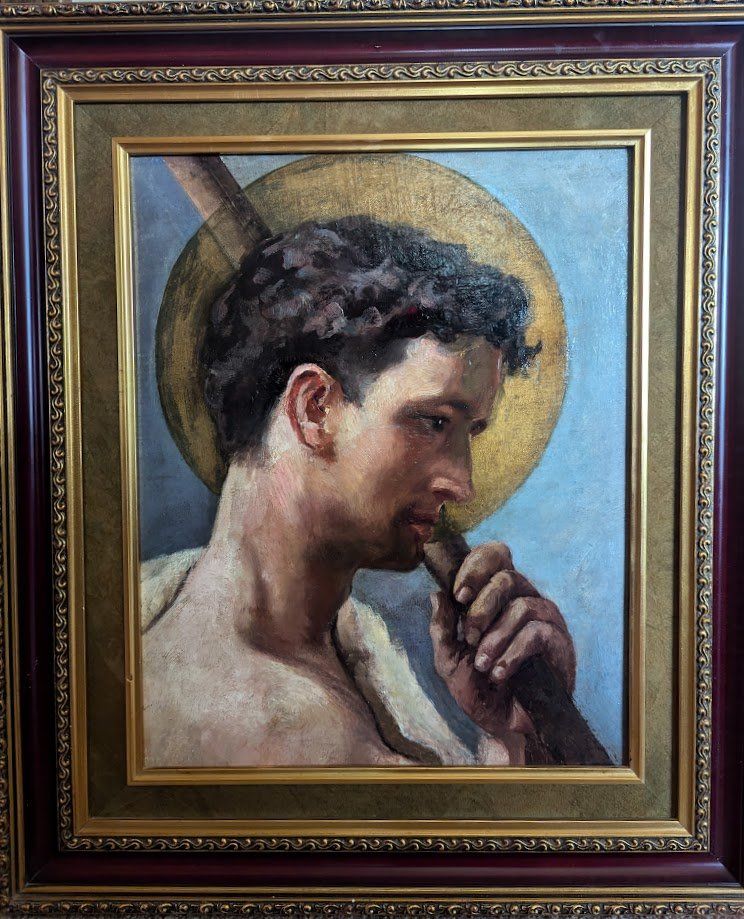
Saint Thomas the Apostle Painting
Valencian School (19th Century)
Artist: Unknown
School: Valencian School (influenced by Joaquín Sorolla)
Date: 19th Century
Medium: Oil on canvas
Dimensions: 42 × 34 cm (canvas), 60 × 50 cm (framed)
Provenance: Lot 817, Auction #38 – Templum Fine Art Auctions, Barcelona, April 25, 2024
Restoration: Conservation and custom framing in progress
A Quiet and Reflective Work of Faith
This Saint Thomas the Apostle painting depicts the apostle in quiet meditation. He holds a slender staff and appears haloed in soft light, his eyes focused yet humble. While the colors are restrained, the mood is deeply expressive. As a result, this composition invites reflection rather than display.
Unlike dramatic religious paintings, this work offers intimacy. Its scale and tone suggest it was created for a chapel or private collection. Although simple in composition, it speaks volumes through subtle light and gesture.
Valencian Influence and Sorolla’s Legacy
Created in the Valencian School tradition, this Saint Thomas the Apostle painting draws from the same artistic environment that shaped Joaquín Sorolla. While Sorolla later became famous for his luminous outdoor scenes, his early training included sacred themes and classical form.
This piece carries that influence. For instance, the natural handling of light and form reveals academic discipline, while the emotion remains grounded. These elements help connect the work to Spain’s broader 19th-century sacred art movement.
Symbolism and Devotion
Saint Thomas, known as “Doubting Thomas,” was transformed by belief. After touching Christ’s wounds, he proclaimed, “My Lord and my God.” This painting captures that emotional journey. The staff may symbolize his later missionary travels, and the faint gold halo confirms his spiritual role.
In essence, this Saint Thomas the Apostle painting is a study in faith, restraint, and reverence.
Restoration and Availability
This artwork is undergoing expert restoration by Baumgartner Fine Art Restoration in Chicago. Their team is carefully uncovering lost pigment, reinforcing the canvas, and preparing the surface for final varnishing. Once complete, it will be mounted in a museum-quality frame.
To understand more about this artistic lineage, visit the Museo del Prado’s Sorolla Exhibition.
You can also explore similar devotional pieces in our Spanish and Latin American Religious Art Collection.